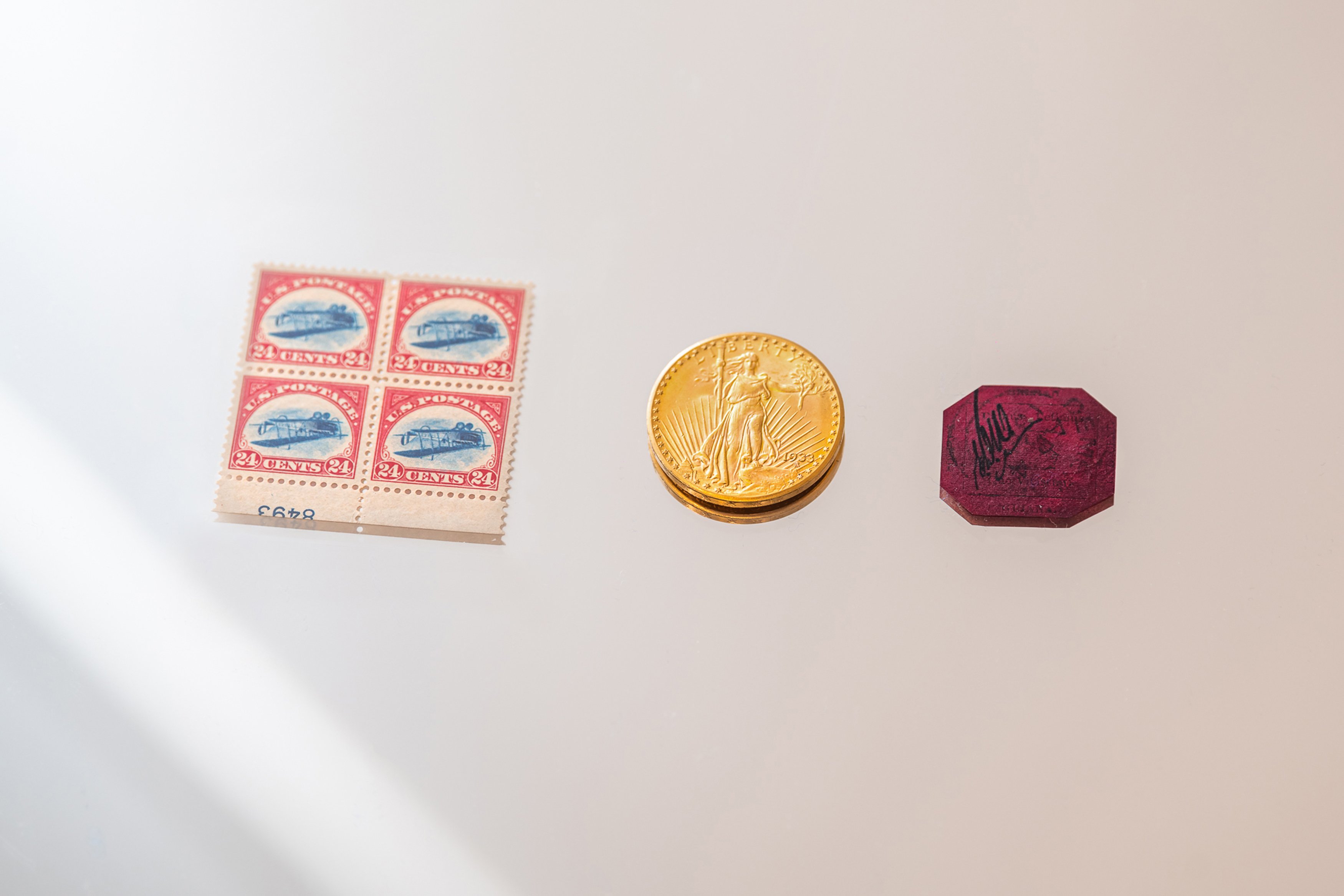
One coin and five stamps that belonged to shoe designer Stuart Weitzman fetched a combined $32 million in a three-lot sale at Sotheby’s on Tuesday, smashing auction records along the way. And it all happened in less than 10 minutes.
A 1933 double eagle coin—the only one of its kind legally allowed to be owned by an individual (more on that later)—went for $18.9 million after three-and-a-half minutes of bidding, sailing past its $10 million-to-$15 million estimate to set a new record price for a single coin at auction. It was the only lot in the sale that came with a guarantee.
Next, a quartet of “Inverted Jenny” postage stamps, so named for the upside-down airplane famously misprinted on them in 1918, fetched $4.9 million—a new high mark for an American philatelic item. The buyer was David Rubenstein, the billionaire collector who cofounded the Carlyle Group private equity firm.
Finally, a single British Guiana One-Cent Magenta stamp from 1856—the last known example of its type in existence—generated $8.3 million, retaining its own record as the most expensive stamp in the world. The buyer was the London-based stamp merchant Stanley Gibbons. The company said it plans to “democratize access to the most elite club in collecting history” by offering fractional ownership of the stamp.
Notably, neither stamp lot hit Sotheby’s presale estimates of $5 million to $7 million (for the “Inverted Jenny”) and $10 million to $15 million (for the One-Cent Magenta).
The “Inverted Jenny” plate block. Courtesy of Sotheby’s.
“I started coin collecting to pass the time in a full leg cast at the age of 12, and later became interested in stamps when my older brother left behind the stamp book he’d started when he went to college,” Weitzman, who did not attend the sale, said in a statement through Sotheby’s. “Today truly marked the culmination of a life’s work.”
Richard Austin, Sotheby’s global head of books & manuscripts, said the sale of the 78-year-old footwear designer’s holdings was “a historic moment in the history of stamp and coin collecting—and one that I think will not be surpassed for a long time, if ever.”
All proceeds will go to the artist’s family foundation, which supports medical research, higher education, and a museum in Madrid devoted to Spanish-Judeo history.
The 1933 double eagle coin. Courtesy of Sotheby’s.
The buyer of the double eagle coin has not been identified.
Though more than 445,000 of these coins were minted in 1933, none was ever circulated. The $20 pieces were intended to be destroyed—but before that happened, 20 were smuggled from the mint.
Most of these have since been recovered by the government (and sent to Fort Knox for safekeeping) but just one was declared legal tender by the U.S. Mint following a lawsuit in 2001.
The following year, as part of the resolution, it was sold at auction for $7.6 million, setting a record at the time for the priciest coin ever traded publicly. The identity of the buyer remained a mystery for nearly two decades until March of this year, when it was revealed to be Weitzman.